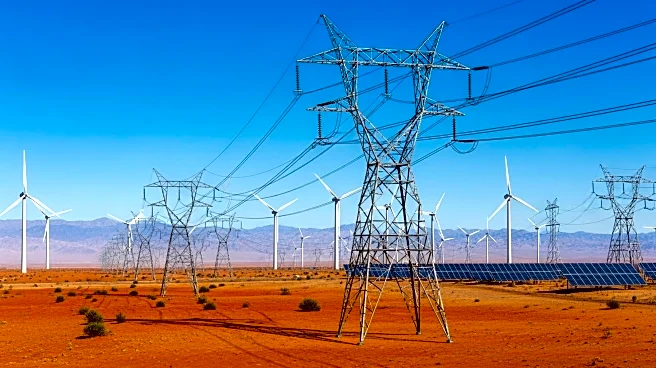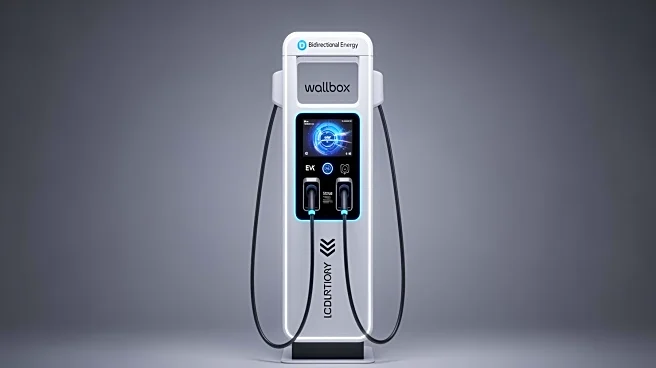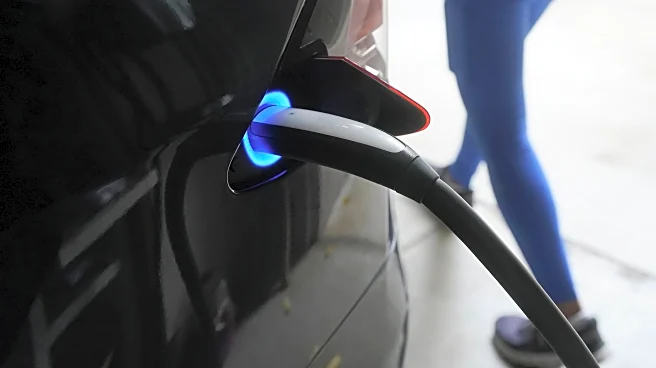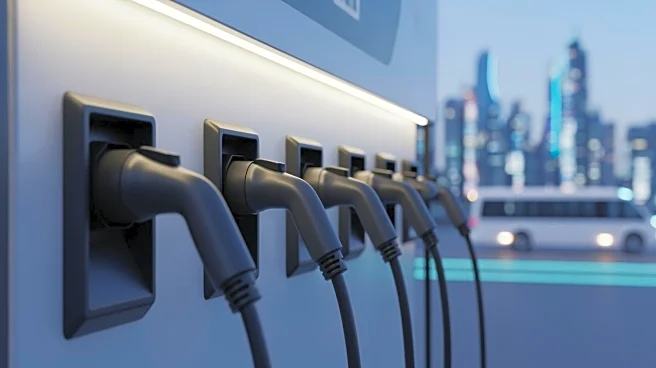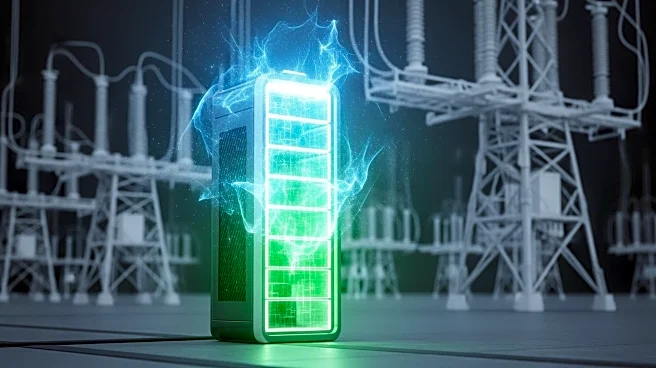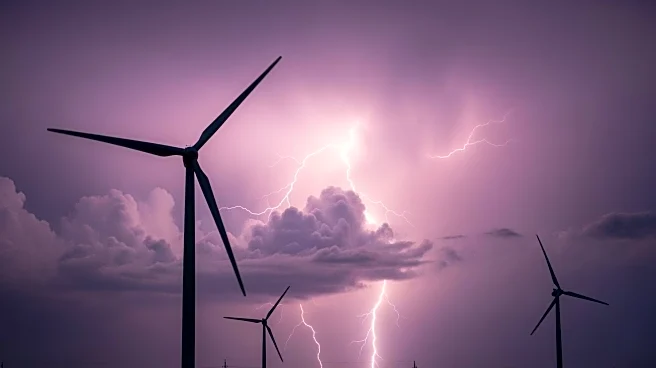What's Happening?
California has enacted a new law aimed at transforming the power grid across the Western United States. Signed by Governor Gavin Newsom, the legislation allows the California Independent System Operator
(CAISO) to expand into a regional energy market that includes other Western states. This initiative seeks to improve the efficiency of electricity sharing across state lines, particularly focusing on renewable energy sources like wind and solar. Historically, Western utilities have operated independently, connected by a series of contracts that often result in renewable energy being underutilized when demand is high. The new law aims to address these inefficiencies by fostering regional coordination, which could lead to better reliability during extreme weather events and lower costs for consumers.
Why It's Important?
The integration of a unified power grid in the Western U.S. is significant for several reasons. It promises to enhance the utilization of renewable energy, thereby supporting environmental goals and reducing reliance on fossil fuels. By enabling more efficient electricity trading across state lines, the initiative could lead to cost savings for consumers and improved grid reliability. This development is particularly crucial as the region faces increasing challenges from climate change, including more frequent and severe weather events. The move also positions the Western U.S. to function similarly to other multi-state markets in the Midwest and East, which have successfully lowered costs and improved service reliability through seamless power movement.
What's Next?
The next steps involve the practical implementation of the regional energy market expansion. Stakeholders, including utilities and regulatory bodies, will need to collaborate to establish the necessary infrastructure and agreements for cross-state electricity trading. Monitoring and evaluation will be essential to ensure the anticipated benefits, such as cost savings and improved reliability, are realized. Additionally, there may be discussions and negotiations with other Western states to facilitate their participation in the expanded grid. The success of this initiative could serve as a model for other regions seeking to optimize renewable energy use and enhance grid resilience.
Beyond the Headlines
Beyond the immediate benefits, the unified power grid could have long-term implications for energy policy and environmental strategy in the Western U.S. It may encourage further investment in renewable energy infrastructure and technology, driving innovation and job creation in the sector. The initiative also raises questions about regulatory harmonization across states, as differing policies and priorities could impact the grid's operation. Furthermore, the shift towards a more interconnected grid may influence national energy policy discussions, highlighting the importance of regional cooperation in achieving sustainable energy goals.
